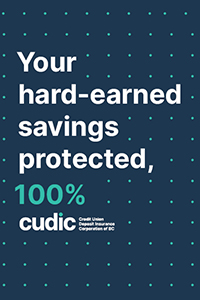Give your kids the best head start
As parents, grandparents, or guardians, we all share a common dream: providing the best education and opportunities for our children. In Canada, one of the most powerful tools for realizing this dream is the Registered Education Savings Plan (RESP). Learn when to start one, the types of investments available, to how and when the funds can be withdrawn. We'll also explore the various grants that make RESPs even more attractive.
When to Get Started with an RESP?
The best time to start an RESP is as early as possible. The sooner you begin saving, the more time your investments have to grow, thanks to the power of compound interest. Government grants are available until the beneficiary turns 16 contributions can continue until the beneficiary turns 31.
Types of Investments Offered Within RESPs
RESPs offer a range of investment options, we can help you to choose options that align with your risk tolerance and financial goals.
- Savings Accounts: A popular choice for conservative investors, this option provides predictable returns and no risk.
- Term Deposits: Term Deposits are also considered no risk and provide a fixed interest rate and the principle is guaranteed. Unlike a savings account, the money may be held in a Term Deposit until maturity.
- Mutual Funds*: These provide the best diversification and can include various asset classes, such as stocks and bonds, catering to different educational goals.
How and When Funds Can Be Withdrawn?
Funds in an RESP can be withdrawn for non-qualified and qualified education expenses, typically including tuition, textbooks, and living expenses. Qualified expenses may allow access to grants, while non-qualified withdrawals don’t, it’s an important distinction and we can help you decide what you’d like to do.
What RESP Grants Are Available in British Columbia?
One of the most compelling reasons to open an RESP in Canada is the access to government grants, which can significantly boost your savings. Here are the key grants available:
- Canada Education Savings Grant (CESG): The CESG matches 20% of your annual RESP contributions, up to a maximum of $500 per year and a lifetime limit of $7,200 per beneficiary. For example, if you contribute $2,500 to an RESP, the government will add $500.
- Additional CESG: For families with lower incomes, an additional CESG of up to 20% is available, further increasing the government's contribution.
- Canada Learning Bond (CLB): The CLB provides up to $2,000 in government contributions for children from low-income families. No personal contributions are required to access this grant.
- British Columbia Training and Education Savings Grant (BCTESG): This provincial grant offers an additional $1,200 for beneficiaries in British Columbia. This is a one-time grant you can apply for when your child turns 6 and must be applied for before they turn 9.
Ready to talk with an expert? Book an appointment
RESP FAQs
1. What is an RESP, and why is it important?
An RESP, or Registered Education Savings Plan, is a tax-advantaged savings plan designed to help Canadians save for their child's post-secondary education. It's important because it allows your savings to grow tax-free and provides access to government grants to boost your contributions.
2. Who can open an RESP?
Parents, grandparents, legal guardians, and other loved one can open an RESP for any
child. The child must be a Canadian resident with a valid Social Insurance Number (SIN).
3. When should I start contributing to an RESP?
It's advisable to open and start contributing to an RESP as your child is born to maximize the benefits of compound growth (for the full duration of saving) and government grants (available until age 16).
4. What types of RESPs are available?
There are 2 types of RESPs offered at First Credit Union: individual and family plans. The choice depends on your family's needs and goals, we can help you choose what’s best for you.
5. What happens if my child decides not to pursue post-secondary education?
You have several options:
- You can transfer the funds to another eligible beneficiary (like a sibling)
- Roll the investment income into your RRSP if you have contribution room
- Close the RESP and withdraw the contributions (with no tax implications) or the earnings (with tax). Grants will need be returned to the government.
6. How do I access government grants like the CESG, CLB and BCTESG?
To access government grants like the Canada Education Savings Grant (CESG) and Canada Learning Bond (CLB), you need to open an RESP account and make contributions. When you contribute $2500 per year, the CESG will add $500. The CESG is based on your contributions (20% up to $500 per year).
The CLB is available to low-income families without the need for contributions.
You can access the one-time $1,200 British Columbia Training and Education Savings Grant (BCTESG) when your child turns 6 up until the day before they turn 9.
7. What is the lifetime contribution limit for RESPs?
There is no annual contribution limit for RESPs, but there is a lifetime limit of $50,000 per child.
8. Can I invest the money in an RESP? RESPs offer a range of investment options, including savings accounts, term deposits, and mutual funds*.
Your choice of investments should align with your risk tolerance and time horizon.
9. Are there fees associated with our RESPs?
Yes, there may be fees associated with managing an RESP, such as administration fees, fund management fees, and trading fees if you choose to invest in mutual funds*.
10. Can I open multiple RESPs for one child?
Yes, multiple people can open RESPs for the same child, but it's important to coordinate contributions to ensure you stay within the contribution limits.
Want some additional resources? Take a look at 'Your Guide to Understanding the RESP'
Ready to talk about saving for your future?
Book an in-person or phone appointment with a local financial services representative today.

